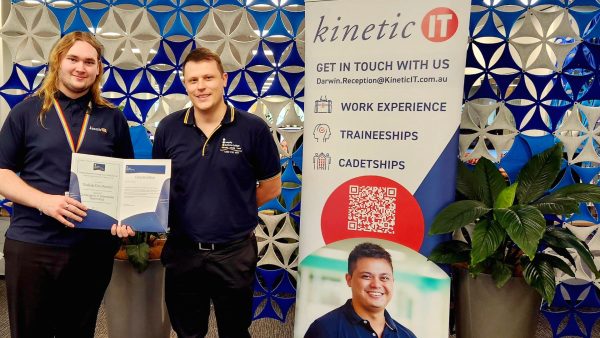Kinetic IT is proud to sponsor this year’s Scopism Global SIAM Survey, capturing the state of service integration and management (SIAM) practice around the world. Now in its fifth year, the survey’s results are based on responses from more than 200 people from 31 countries.
The results from this year’s Global SIAM Survey are now available. Find out more below about the survey’s findings and how to download the white paper.
The annual Global SIAM Survey considers the perspectives of:
- Organisations planning to adopt SIAM
- Organisations that have adopted SIAM
- Organisations that sell SIAM consultancy or solutions
9 surprising insights from the Global SIAM Survey
The survey is always a valuable read and great insight into the state of SIAM. This year is no exception with some interesting revelations about activity and progress within the SIAM space. Below we’ve compiled our top nine highlights from this year’s Global SIAM Survey.
1. Strategic drivers for implementing SIAM are changing
In this year’s survey, there’s a clear shift in why SIAM is being undertaken by organisations. Cost focus has been overtaken by service quality and improved service performance, reflecting the benefits SIAM can bring to the customer and their business. It is also interesting to see a decrease in the previous focus areas leading to a more even spread across the top 4 identified SIAM drivers:
- Better ability to measure and attribute service quality
- Want to have better performance from existing vendors
- Want to have more control of existing vendors
- Better ability to measure and attribute service costs
Interestingly the top 4 results define the bare minimum areas SIAM will deliver and improve upon. This suggests that most organisations have yet to explore the additional benefits SIAM can bring, such as pace and flexibility in evolving and implementing services and technologies, as well as enhancements to user experiences. The exciting part here is the opportunity that remains for SIAM solutions to contribute to customer delight.
2. Experience is shaping pragmatism on SIAM implementation timelines
When ‘planning to implement SIAM’, we see a decrease in the ‘less than a year’ to implement category and an increase in the ‘not complete yet’ category. This seems to indicate a better understanding of the complexity of SIAM and our experience supports this practically.
SIAM implementations can be more difficult than anticipated, requiring greater expertise, robust organisational change management support and a well-prepared and engaged customer organisation. These factors are critical to SIAM success.
RELATED CONTENT: SIAM Archetypes whitepaper: grow your service integration success
3. Service management approaches are becoming more elaborate – no silver bullets!
The Global SIAM Survey results reveal that SIAM is being used in conjunction with more traditional service management, project management, Agile, DevOps, ISO/IEC 20000 and more approaches. These numbers reflect the necessary capabilities of staff beyond service integration and the T-shaped skills of SIAM practitioners. In the services environment, a range of skills is required to support different outcomes and requirements.
4. More women are entering the SIAM Profession
Whilst the gender breakdown responses (as in previous years) show a much higher percentage of male practitioners in the SIAM field, it was encouraging to see an increase of 7% in female respondents. The survey data shows an increase in female participation year on year with a significant leap from 2021 to 2022 from 18 to 25%. This is great news in terms of advancing the diversity of practitioners within the SIAM space.
RELATED CONTENT: The 10 most popular IT careers at the Go Girl tech conference
5. Younger people are entering the profession
Whilst there is still a trend to have more senior personnel working in SIAM, in parallel it is encouraging to see more individuals from the under 30 age group (from 3% to 5%) entering the profession.
Our experience supports the usual seniority within key SIAM roles, however, it is positive to note younger people are entering the SIAM space, as it is always a benefit to have a diverse workforce. The combination of younger people entering the SIAM profession, and the need for more practical experience, should give rise to longer, more varied and more defined career pathways in SIAM.
6. SIAM practitioners are sought after – and the compensation supports this
The ongoing trend over the five years the Global SIAM Survey has been running has revealed that SIAM can be a lucrative career. For the second year in a row, 36% of the respondents earned a salary of more than $120,000 (AUD). The compensation levels suggest that SIAM roles are relatively senior roles – this is also reflected in the job titles supplied: Consultants, Service Delivery Managers and IT Managers are common roles taking on SIAM responsibilities.
RELATED CONTENT: Want a career in cyber security? Experts share 7 useful tips
7. More providers are stepping into the SIAM space
More and more customer organisations are recognising the business benefit of service integration solutions. With more demand, the Global SIAM Survey also reveals even more service providers entering the service integration space – either as an integrator or as a provider capable of operating effectively within a SIAM model.
About 45% of respondents to the survey were from organisations selling SIAM consultancy, technology or implementation solutions. It is natural for the survey to attract respondents operating in this space, but the figure is considerable which suggests an increase in solution providers to match the uptake in SIAM solutions being requested and provided.
8. SIAM remains an IT-centric model
Whilst in itself this isn’t surprising as SIAM’s heritage is in IT, last year’s Global SIAM Survey revealed more of a foray into non-IT services. This year organisations that have adopted SIAM models suggested that only 22% were considering expanding their SIAM models to include other business services in the future. In 2021, 49% of respondents suggested that this was in scope.
It’s hard to determine why there is such a shift here. Perhaps it is due to the pandemic creating considerable challenges for many organisations, and the strategic plans of some organisations being curtailed. It will be interesting to see if this trend changes at all in 2023.
RELATED CONTENT: SIAM Global Survey: What is it and how to get involved
9. SIAM training is valued
Nearly 60% of those that have implemented SIAM have also ensured that their staff are adequately trained. This is great news. We often receive feedback about how beneficial SIAM training is – not just for those working in SIAM environments but also for the customers of a SIAM model. It helps them understand their role, and the interrelationships and responsibilities within SIAM model layers; this supports a positive and collaborative ‘one team’ culture.
Global SIAM Survey: Consider the freeform comments!
Finally, we would recommend reviewing the additional free-form comments that were made by respondents. These are often valuable experiences that could be of assistance to you. Many comments focused on having the right buy-in, knowledgeable stakeholders, and how detrimental micromanagement of the service integrator can be. These comments are relatable to our experience. There are many cautionary tales to be drawn from within the data shared. Each section offers different questions, relevant to those organisations and their stage or journey and there is some revealing insight to discuss in that data too.
Visit Scopism’s website to download the full whitepaper, proudly sponsored by Kinetic IT. If you’re interested in speaking with one of our SIAM professionals to see how this approach could work for you, get in touch with us.
About the authors
About Michelle Major-Goldsmith
Michelle Major-Goldsmith is the Service Management Capability Manager with Kinetic IT. Her role is to educate rather than ‘just train’, mentor and advise Kinetic IT staff and its customers in the principles of service management and the practical application of these principles in various environments.
Alongside Simon, she was the Lead Architect for the Scopism 2nd edition Service Integration and Management Bodies of Knowledge (BoK, 2020), the SIAM Professional BoK (2018) and was also a founder member of the SIAM Foundation BoK architect team (2016). Michelle contributed to the VeriSM publication (2017) and co-authored the VeriSM pocket guide (2018). Michelle was awarded the itSMF Australia Service Management Champion of the Year in 2017 and Thought Leader of the Year (together with Simon Dorst) in 2018. The same year Michelle was named as one of the top 25 service management pros and experts to follow on Twitter. In 2020 and again in 2022 HDI was acknowledged here as one of the Top 25 Thought Leaders in Technical Support and Service Management.
Follow Michelle Major-Goldsmith on Twitter: @MMG9898
About Simon Dorst
Simon Dorst is Kinetic IT’s Manager for Service Management Services. ITIL trained in 1992, he has spent most of his career educating and advising people and organisations of its benefits and application in the Netherlands, Singapore and Australia.
Known as the ‘ITIL Zealot’, he was the Lead Architect for the Scopism 2nd edition Service Integration and Management Bodies of Knowledge (BoK, 2020), the SIAM Professional BoK (2018) and was also a founder member of the SIAM Foundation BoK architect team (2016). Simon contributed to the VeriSM publication (2017) and co-authored the VeriSM pocket guide (2018).
In 2018 Simon was named one of HDI’s Top 25 Thought Leaders in Technical Support and Service Management; and awarded the itSMF Australia Service Management Champion of the Year, as well as the Thought Leader of the Year (together with Michelle Major-Goldsmith). In 2022, he received the Service Management Lifetime Contribution award from itSMF Australia.
Follow Simon Dorst on Twitter: @ITILZealot

















